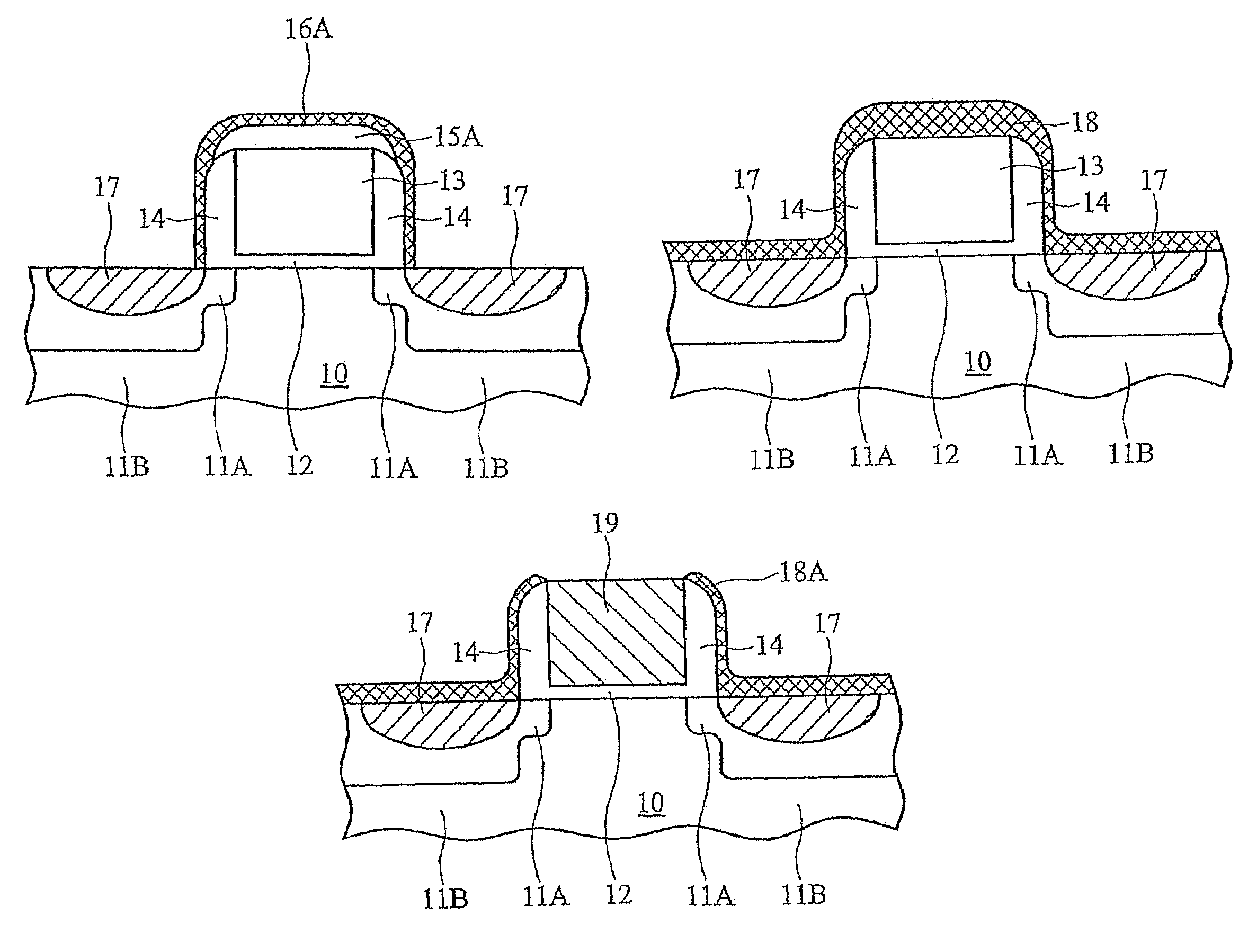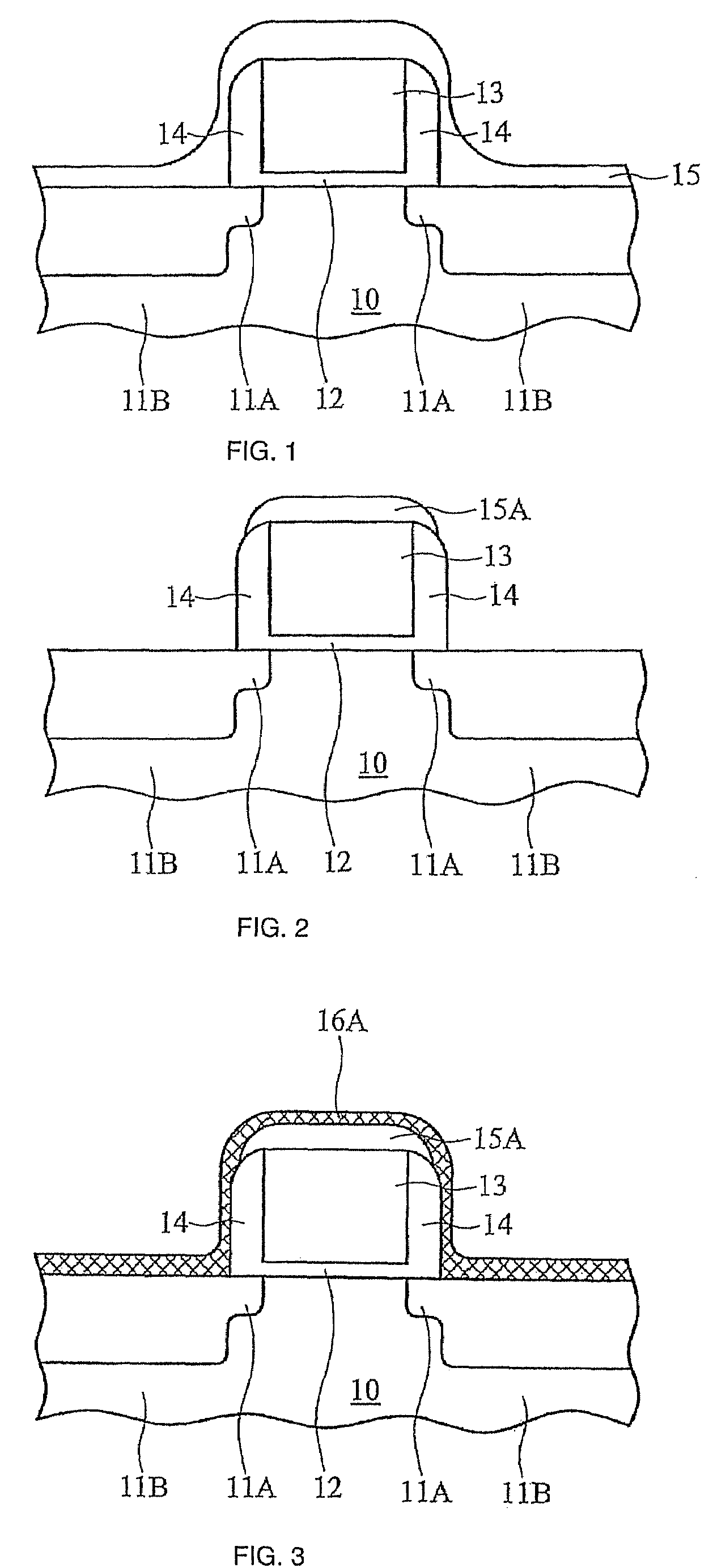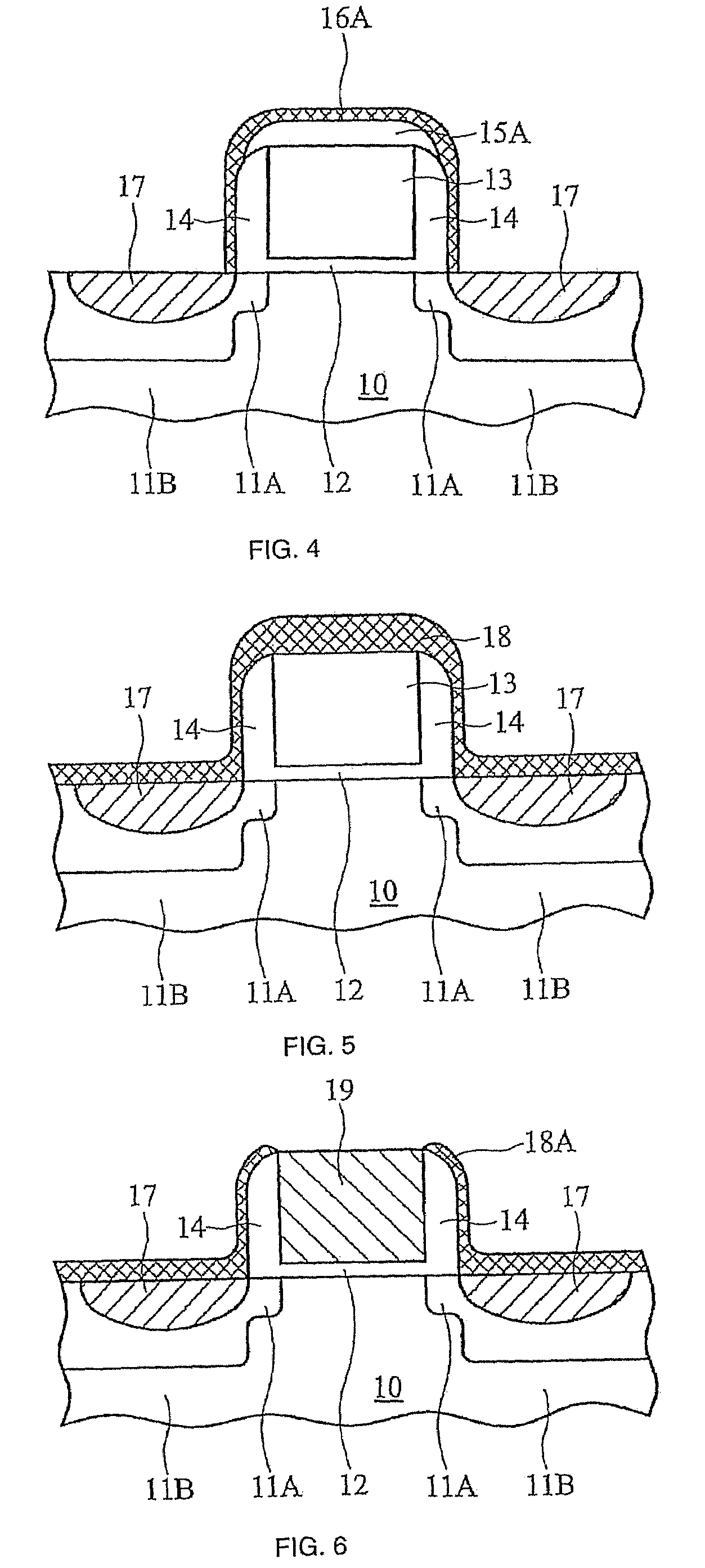Semiconductor structure including silicide regions and method of making same
a technology of silicide region and semiconductor structure, which is applied in the direction of semiconductor devices, basic electric elements, electrical equipment, etc., can solve the problems of low reliability, and high junction leakage curren
- Summary
- Abstract
- Description
- Claims
- Application Information
AI Technical Summary
Benefits of technology
Problems solved by technology
Method used
Image
Examples
Embodiment Construction
[0011]The method steps described below do not form a complete process flow for manufacturing integrated circuits. The present embodiments can be practiced in conjunction with integrated circuit fabrication techniques currently used in the art, and only so much of the commonly practiced process steps are included as are necessary for an understanding of the described embodiments. The figures represent cross-section portions of a semiconductor chip or a substrate during fabrication and are not drawn to scale, but instead are drawn to illustrate the features of the described embodiments.
[0012]Sequential steps of an exemplary embodiment of the method of forming silicide regions in a semiconductor substrate are described below with respect to the schematic illustrations of FIGS. 1-7. Similar reference numerals denote similar features. Referring first to FIG. 1, a conventional transistor structure is shown comprising a substrate 10 doped with either an N-type impurity or P-type impurity, ...
PUM
| Property | Measurement | Unit |
|---|---|---|
| temperature | aaaaa | aaaaa |
| temperature | aaaaa | aaaaa |
| temperature | aaaaa | aaaaa |
Abstract
Description
Claims
Application Information
 Login to View More
Login to View More - R&D
- Intellectual Property
- Life Sciences
- Materials
- Tech Scout
- Unparalleled Data Quality
- Higher Quality Content
- 60% Fewer Hallucinations
Browse by: Latest US Patents, China's latest patents, Technical Efficacy Thesaurus, Application Domain, Technology Topic, Popular Technical Reports.
© 2025 PatSnap. All rights reserved.Legal|Privacy policy|Modern Slavery Act Transparency Statement|Sitemap|About US| Contact US: help@patsnap.com



